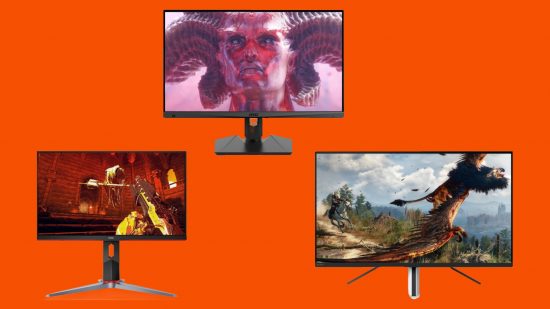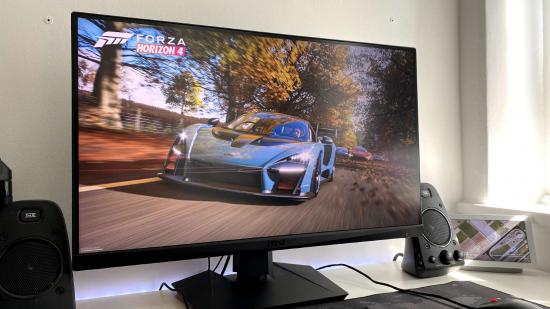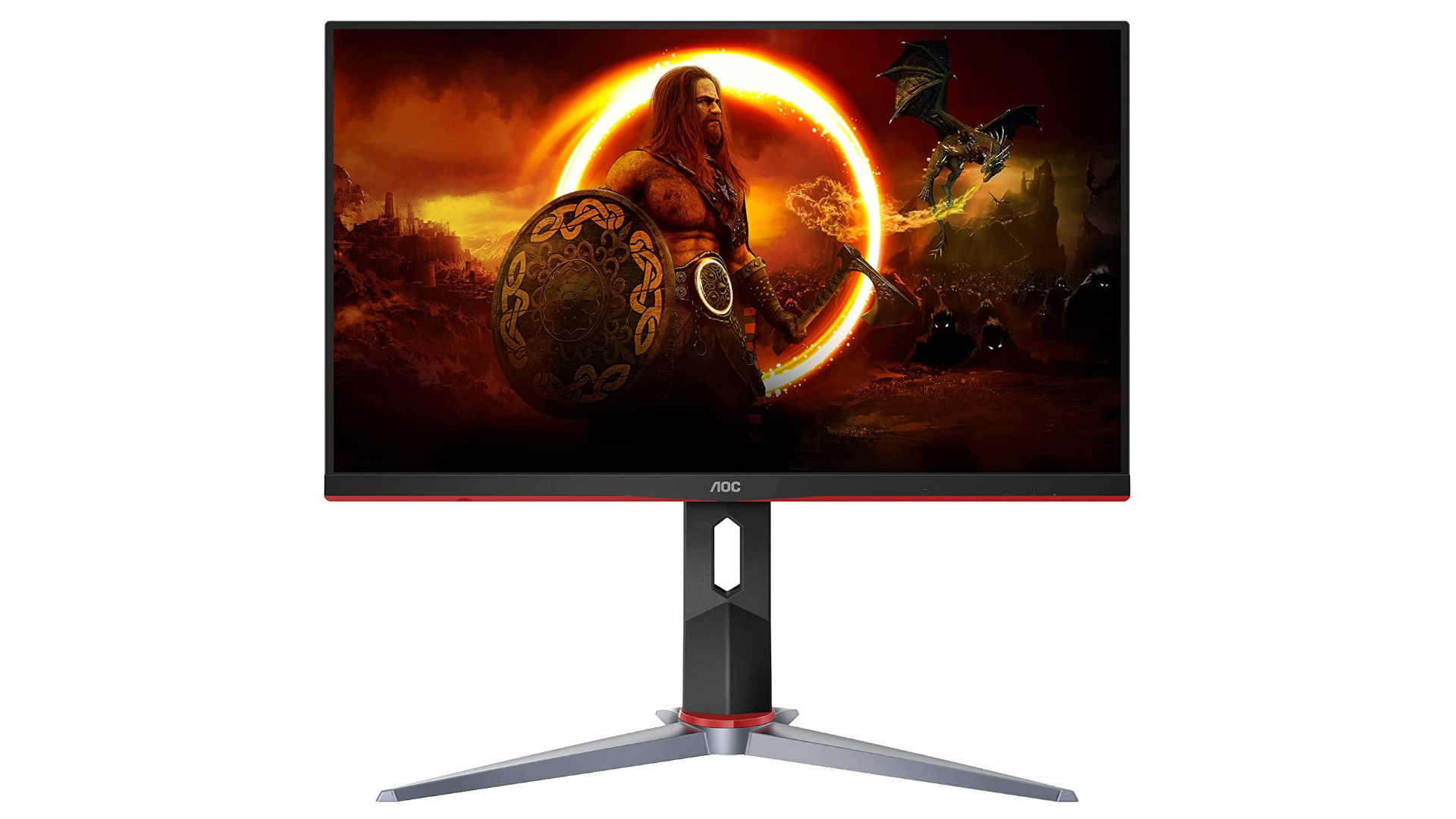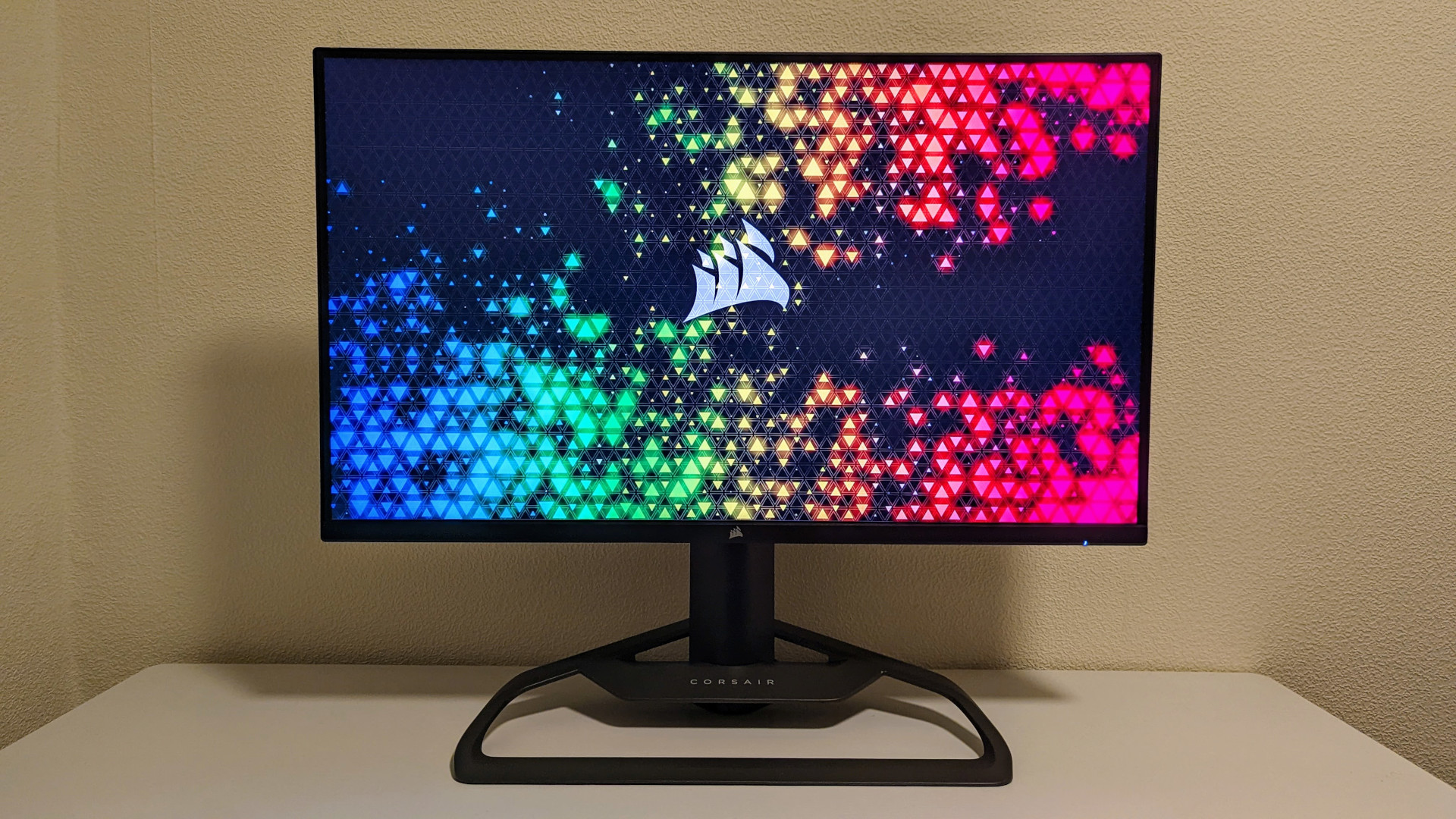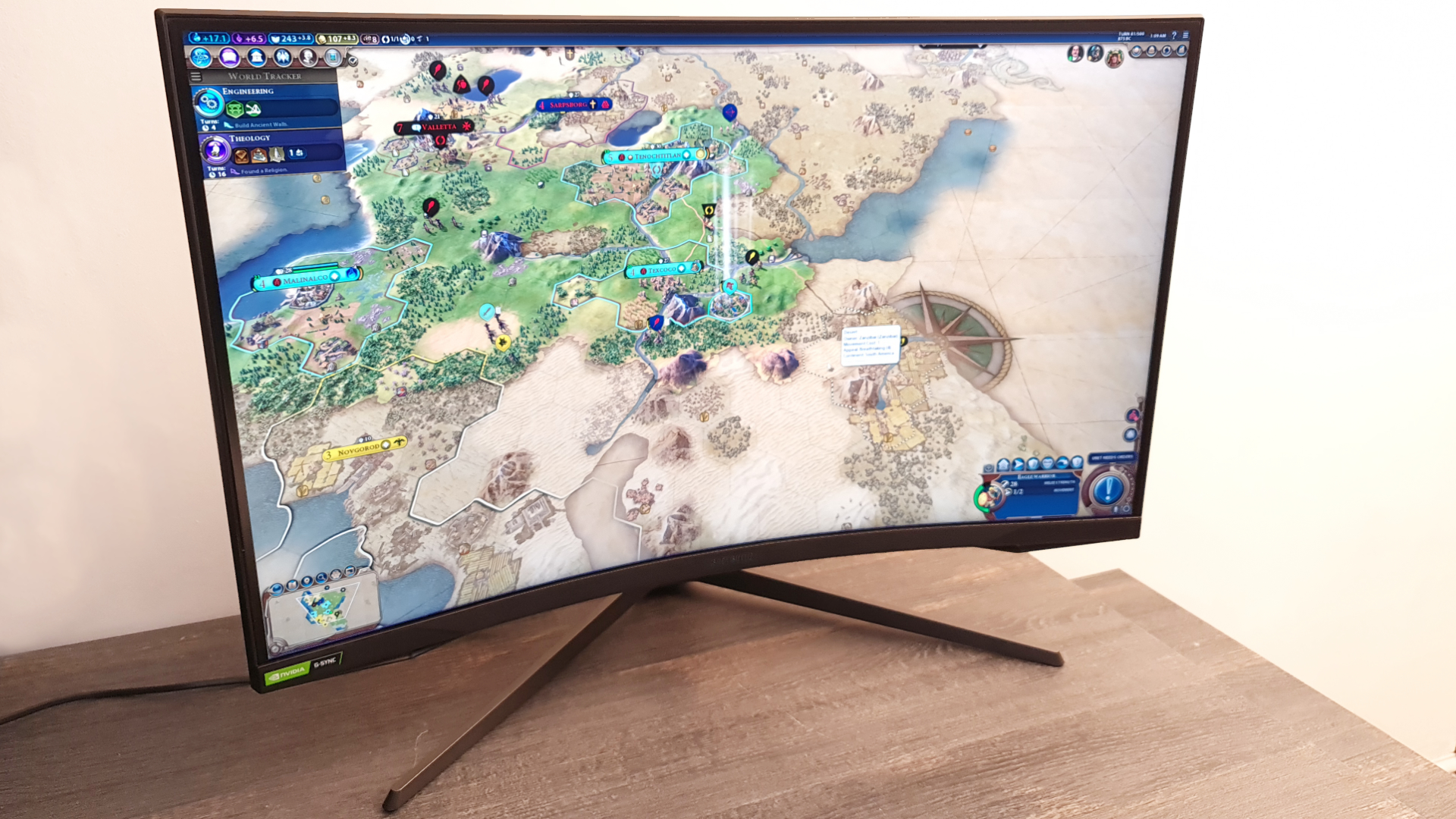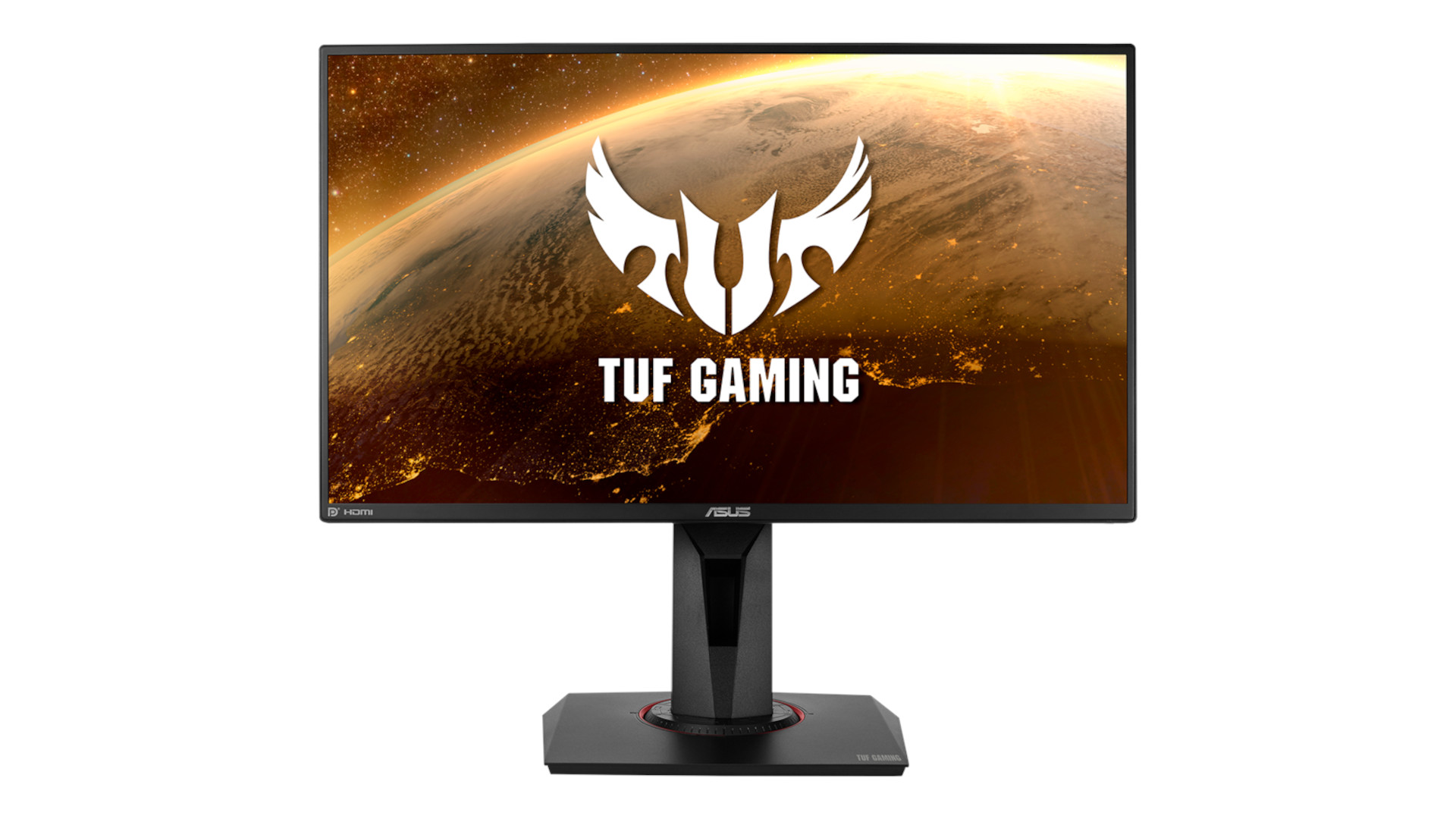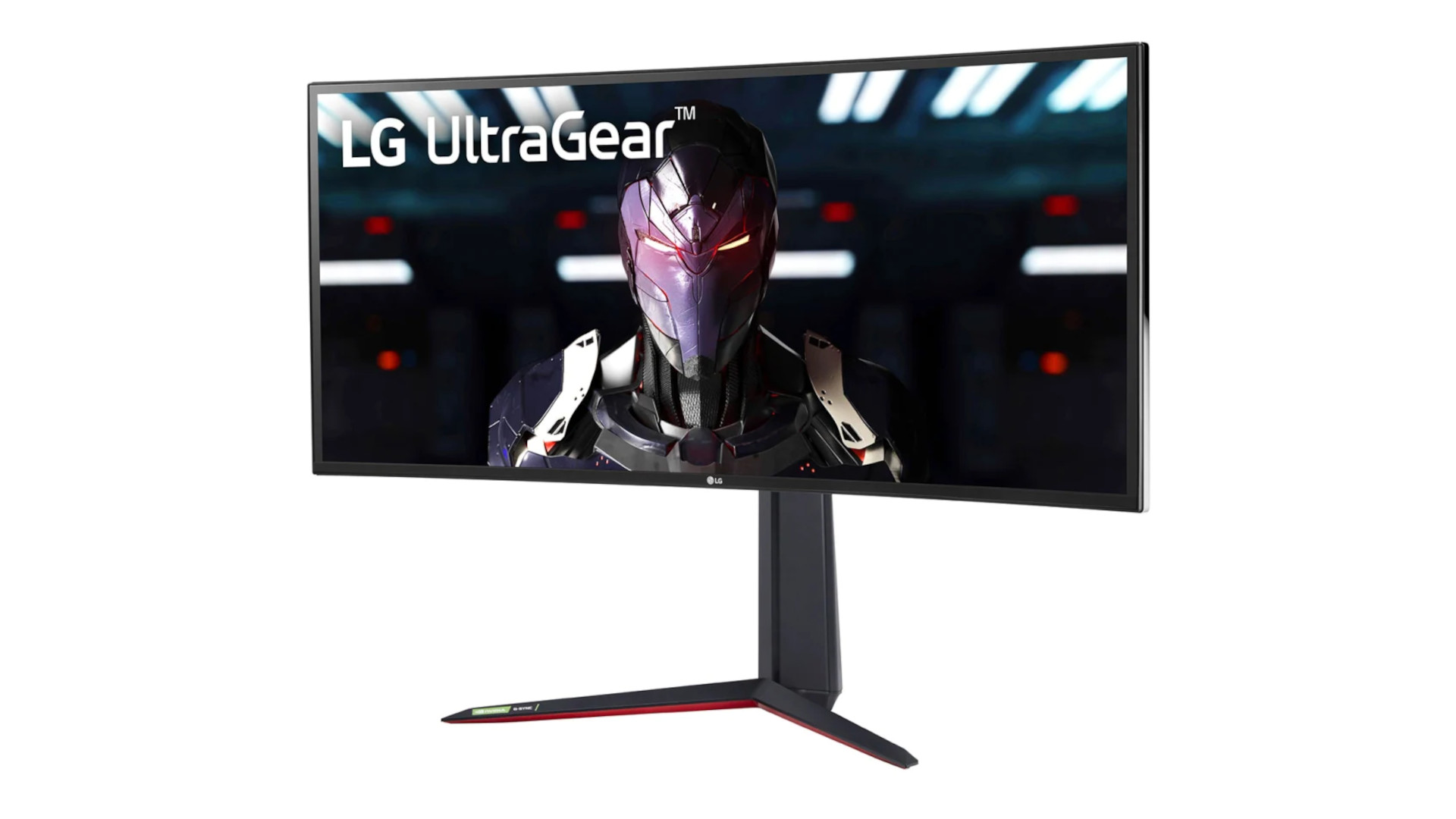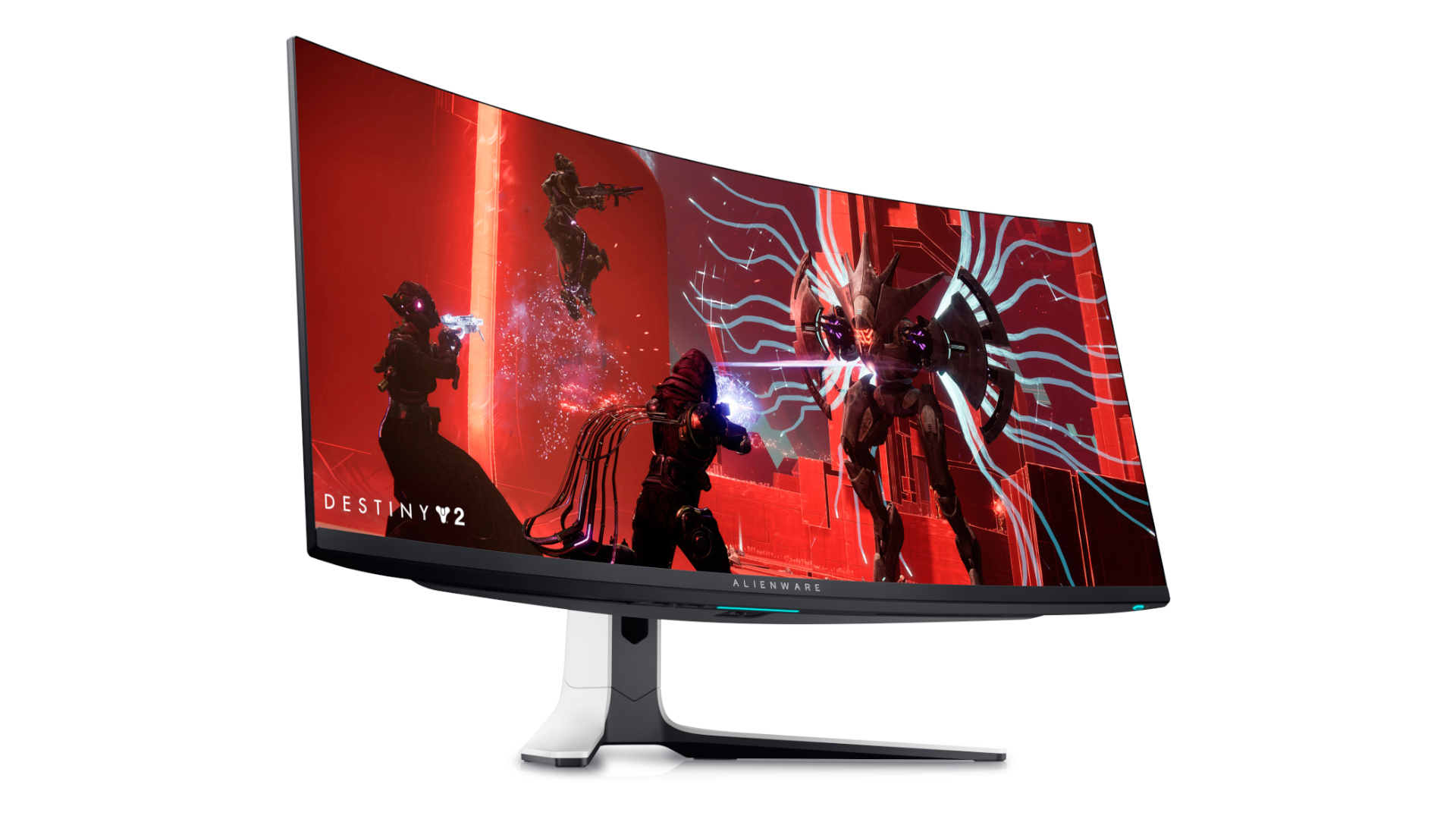What is the best gaming monitor? You spend so long staring at anything but top-tier displays in your daily grind that your eyes are practically going square, but you need to now assess the resolution, refresh rate, response time, and more and up your monitor game. We’re here to help you find the best monitor for gaming that suits your needs, with reviews on everything from 24-inch kings to ultrawide behemoths.
Display technologies have come a long way over the past several years, with Micro LED and OLED options finally arriving on the market. These technologies finally mean it’s possible to enjoy a great HDR experience while you’re sitting at your gaming desk, but be prepared to cough up some cash for this premium experience.
For everyone else, IPS and VA panels remain as reliable as ever. Now, resolutions and refresh rates previously reserved for the higher end of the space are readily available at much more reasonable prices.
Get gaming gear for less ☞ Our free money-saving tool finds discounts for you at over 40,000 online retailers. Try PCGamesN Deal Finder now.
Here are our picks for the best gaming monitor:
- MSI Optix MAG274QRF-QD – best overall
- AOC 24G2SP – best cheap monitor
- Sony Inzone M9 – best monitor for consoles
- Asus ROG Swift 360Hz PG27AQN – best high refresh rate monitor
- Corsair Xeneon 32UHD144 – best 4K monitor
- Samsung Odyssey G7 – best 1440p monitor
- Asus TUF Gaming VG259QM – best 1080p monitor
- LG 34GP83A-B – best ultrawide monitor
- Alienware AW3423DW – best for HDR monitor
- MSI MAG 325CQRF QD – best 1440p curved monitor
- LG UltraGear 32GR93U-B – best mid-tier 4K monitor
1. MSI Optix MAG274QRF-QD
The best gaming monitor overall is the MSI Optix 274QRF QD.
MSI Optix MAG274QRF-QD specs:
| Screen size | 27-inches |
| Native resolution | 2560 x 1440 |
| Max refresh rate | 165Hz |
| Panel type | IPS |
Pros:
- Fast response times
- Wide coverage of DCI-P3 and AdobeRGB color gamuts
Cons:
- Overly saturated colors out of the box
- Poor HDR support
MSI may not be the first company that comes to mind when it comes to discussing the best gaming monitor but displays like the Optix MAG274QRF-QD prove that they should. While it most certainly isn’t the most memorable of model names, behind its alphabet soup is a screen that is basically a perfect match for most gamers out there.
It boasts a host of desirable specs, including a 1440p resolution paired with a buttery smooth refresh rate of 165Hz. These are elevated by the monitor’s 27-inch Rapid IPS panel, which offers superior contrast ratios to many of its competitors and surprisingly wide color gamut coverage thanks to the inclusion of quantum dot technology. Suffice to say, the best PC games look wonderfully vibrant and sharp on this display.
However, it’s not just a pretty face, as this monitor is more than capable when it comes to responsiveness. It packs fast response times that are devoid of any noticeable ghosting, with Nvidia G-Sync compatibility helping to stave off any unwanted screen tearing.
Read our MSI Optix MAG274QRF-QD review.
2. AOC 24G2SP
The best cheap gaming monitor is the AOC 24G2SP.
AOC 24G2SP specs:
| Screen size | 24-inches |
| Native resolution | 1920×1080 |
| Max refresh rate | 165Hz |
| Panel type | IPS |
Pros:
- 165Hz refresh rate
- Above average contrast ratio for an IPS
Cons:
- Response times are a touch slow
- Annoying OSD navigation
If you’re looking for a gaming monitor that offers good value without breaking the bank, then look no further than the AOC 24G2SP. Don’t let its low price point fool you, as this display punches well above its weight.
Just because you’re looking to save a buck, doesn’t mean you need to be saddled with lesser-quality screens or paltry refresh rates. AOC knows this and has packed a 1080p IPS panel inside the 24G2SP with a refresh rate of 165Hz.
These specs are perfect for budget gamers, as they don’t require powerful hardware to make the most out of them. If your system struggles to maintain a consistent frame rate, fret not, as AMD FreeSync Premium support will help mitigate stuttering and tearing.
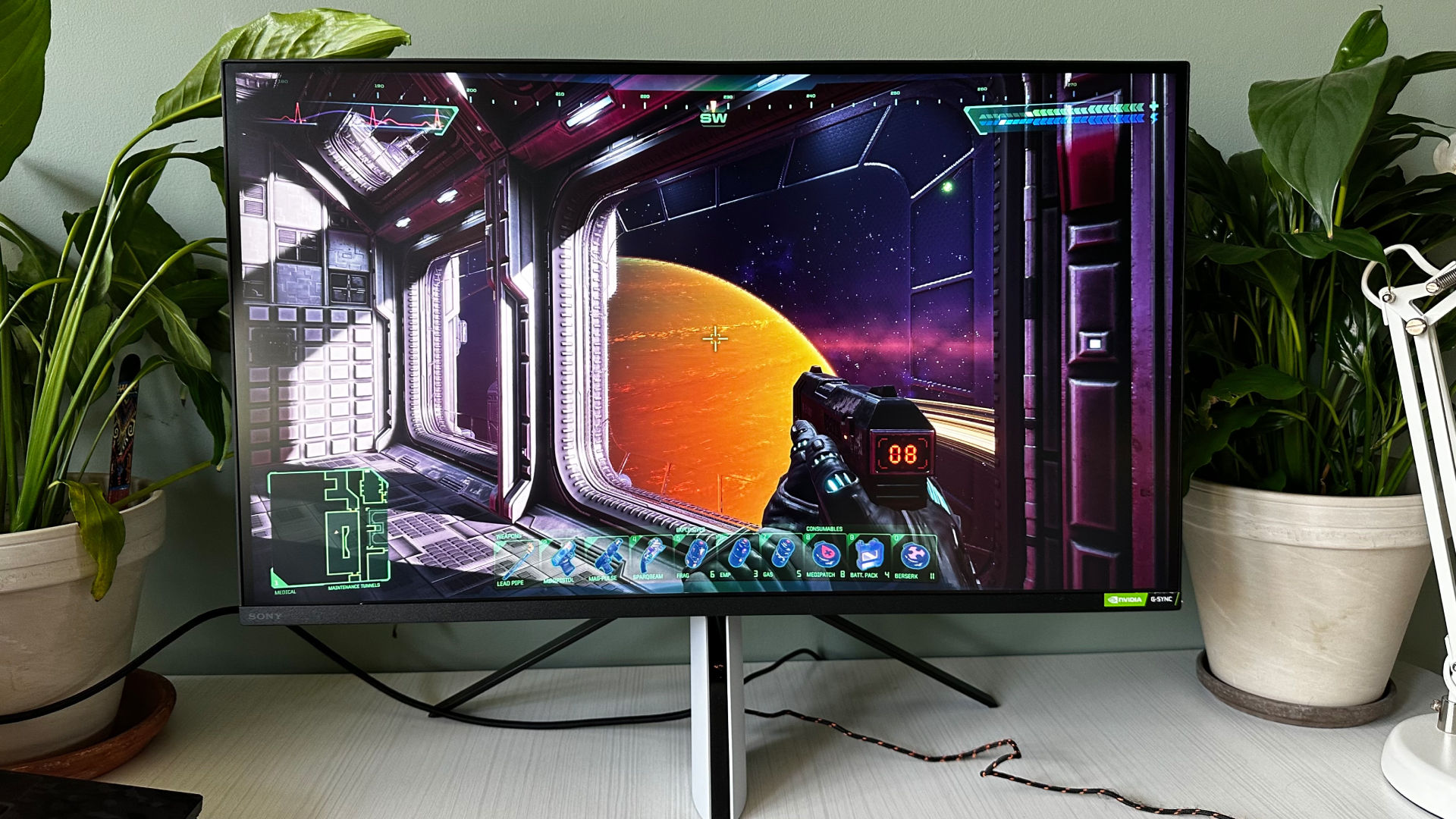
3. Sony Inzone M9
The best next-gen gaming monitor for Xbox Series X and PS5 is the Son Inzone M9.
Sony Inzone M9 specs:
| Screen size | 27 inches |
| Native resolution | 3840 x 2160 |
| Max refresh rate | 144Hz (G-Sync and Freesync) |
| Panel type | IPS (Full-array 96 local dimming zones) |
Pros:
- Amazing response times
- Sharp image and accurate colors
- Good HDR and SDR brightness
Cons:
- Expensive
- Dodgy KVM switch
- Poor contrast
Sony, as a respected hardware manufacturer, was always going to do a good job when it entered the gaming monitor arena. With a native resolution of 4k and 144Hz max refresh rate with G-Sync, it’s a monitor that boasts some impressive specs.
Playing here helps you to appreciate the work of your favorite game’s visual artists because it offers an accuracy of color, and sharpness of image quite unlike anything you get with the majority of monitors. You can use it for both Xbox Series X and PS5 gaming, and its built-in interface is easy to navigate and understand, meaning you won’t need to worry about it not being so well optimized if you switch platforms.
Of course, this is an expensive bit of gear – one of the most costly options on this list. In return for that, you get an impressive monitor that has some truly remarkable response times. It does struggle with contrast a little bit, which might be off-putting, but all in all, it’s a case of getting what you pay for. We think it’s worth every penny.
Read our Sony Inzone M9 review.
4. Asus ROG Swift 360Hz PG27AQN
The best high refresh rate monitor is the Asus ROG Swift 360Hz PG27AQN.
Asus ROG Swift 360Hz PG27AQN specs:
| Screen size | 27-inches |
| Resolution | 2560 x 1440 |
| Refresh Rate | 360Hz |
| Panel Type | IPS |
| Peak brightness | 400cd/㎡ (SDR) 600 cd/㎡ (HDR) |
| Connectivity | DisplayPort 1.4 (x1) HDMI 2.0 (x3) USB 3.2 Gen 1 Type-A (x2) 3.5mm audio out |
Pros:
- ULMB 2 is a game changer
- Built-in Nvidia Reflex Analyzer
- Great SDR brightness
Cons:
- Expensive
- No USB-C DP Alt. Port
- Not a huge upgrade for existing 240Hz owners
The Asus ROG Swift 360Hz PG27AQN is second to none when it comes to competitive gaming, offering up a high-fidelity and highly-responsive gaming experience. All the specs you’d expect are here, including a 360Hz refresh rate and low response times, but there’s plenty more to enjoy.
One of the major defining characteristics of the PG27AQN is its 27-inch, QHD IPS panel. Freed from the confines of 1080p and TN technology, esports games and more look fantastic on this display. Providing you have a powerful enough graphics card, there is simply no other monitor out there that can match the feature set it provides.
All that said, it will cost you a princely sum. Providing you primarily play the likes of CS2 and League of Legends very regularly, you should find your money is well spent. The former game in particular benefits from the PG27AQN’s support for ULMB 2 (Ultra Low Motion Blur 2).
Read our Asus ROG Swift 360Hz PG27AQN review.
5. Corsair Xeneon 32UHD144
The best 4K monitor is the Corsair Xeneon 32UHD144.
Corsair Xeneon 32UHD144 specs:
| Screen size | 32-inches |
| Native resolution | 3840 x 2160 |
| Max refresh rate | 144Hz |
| Panel type | IPS |
Pros:
- High resolution and refresh rate IPS panel
- Produces accurate and vivid colors
Cons:
- Lacks proper local dimming for HDR
- 1ms response time requires Adaptive Sync to be disabled
We expect high levels of performance and great build quality from Corsair products, and the Xeneon 32UHD144 oozes both in spades. Despite being relatively new to the display scene, the company has already crafted our favorite monitor for high-resolution gaming.
Pairing this screen with one of the best graphics cards on the market is a must, in order to properly drive its 4K resolution and make use of its 144Hz refresh rate. This is much easier to achieve than it sounds thanks to upscaling technologies like Nvidia DLSS and AMD FSR, meaning your games can both look and feel fantastic with pin-sharp image quality and smooth gameplay.
The Xeneon 32UHD144 also offers a number of conveniences seldom found in competing options, such as its wonderfully pleasing cable management system and Corsair iCue integration. It also features a built-in multi-mount at the top of its stand, which can be used to seamlessly place your webcam or key light.
Read our Corsair Xeneon 32UHD144 review.
6. Samsung Odyssey G7
The best 1440p monitor.
Samsung Odyssey G7 specs:
| Screen size | 27-inches / 32-inches |
| Native resolution | 2560 x 1440 |
| Max refresh rate | 240Hz |
| Panel type | VA |
Pros:
- 1440p resolution combined with 240Hz refresh rate
- Great response times
Cons:
- HDMI 2.0 ports are limited to 144Hz
- 1000R curve won’t be for everyone
Should you be plenty comfortable with a 1440p but are looking to enhance your gaming experience further, then the Samsung Odyssey G7 is a compelling option. It’s part of a growing class of high-resolution 240Hz displays, offering a familiar level of image quality with even better responsiveness.
Samsung has tuned the VA panel inside the Odyssey G7 exceptionally well, unlocking the kind of great response times that are more commonly associated with IPS panels. This screen technology comes with its own unique advantages, though, such as deeper black levels and a higher level of contrast for greater immersion.
While we recommend picking up the 27-inch model, you can pick it up in a 32-inch screen size if you’d prefer something a bit larger. Just bear in mind that opting for the bigger display will reduce the sharpness slightly.
Read our Samsung Odyssey G7 review.
7. Asus TUF Gaming VG259QM
The best 1080p monitor is the Asus TUF Gaming VG259QM.
Asus TUF Gaming VG259QM specs:
| Screen size | 24.5-inches |
| Native resolution | 1920 x 1080 |
| Max refresh rate | 280Hz |
| Panel type | IPS |
Pros:
- 280Hz refresh rate
- Doesn’t sacrifice color quality for its response times
Cons:
- Higher-resolution displays only cost a little more
- Pointless HDR
Despite there now being plenty of higher resolution displays, 1080p resolution remains the most popular choice among gamers, according to the Steam Hardware & Software Survey. There are plenty of Full HD options available on the market, but we feel the Asus TUF Gaming VG259QM stands tall above its competitors.
With its 280Hz refresh rate, it falls slightly short of the fastest monitors out there but comes close enough that all but those who demand the speediest of screens should care. It offers a greater balance of image quality and responsiveness too versus its more expensive counterparts, with the ability to produce a wider array of accurate and vivid colors.
It doesn’t break the bank either, offering (frankly) bonkers value, and its 27-inch variant doesn’t cost much more either. That said, we’d recommend sticking with the 24.5-inch version for a higher pixel density, which should help create a sharper overall image.
8. LG 34GP83A-B
The best ultrawide monitor is the LG 34GP83A-B.
LG 34GP83A-B specs:
| Screen size | 34-inches (ultrawide) |
| Native resolution | 3440 x 1440 |
| Max refresh rate | 160Hz (OC) |
| Panel type | IPS |
Pros:
- Nano IPS benefits in an ultrawide form factor
- Higher refresh rate than other similar models
Cons:
- Potential for resolution incompatibility with some games
- Stand is fairly large
Switching to a 21:9 aspect ratio can help provide a more immersive experience, particularly in expansive open-world games like Cyberpunk 2077 and Red Dead Redemption 2. However, these screens can also enhance your productivity, and the LG 34GP83A-B is perfect for both these use cases.
It comes with a subtle 1900R curve so its screen subtly envelops you, filling more of your peripheral vision in the process. While most ultrawides typically feature VA panels, LG has managed to cram its Nano IPS technology inside this particular monitor, which allows for great color reproduction.
Combined with a 160Hz refresh rate, providing a smoother experience than many of its competitors that boast lower specs, you’ll be hard-pressed to find a better gaming ultrawide than the 34GP83A-B around its price point.
9. Alienware AW3423DW
The best HDR monitor is the Alienware AW3423DW.
Alienware AW3423DW specs:
| Screen size | 34-inches (ultrawide) |
| Native resolution | 3440 x 1440 |
| Max refresh rate | 175Hz |
| Panel type | QD-OLED |
Pros:
- Per-pixel local dimming makes for a fantastic HDR experience
- Ultrawide 21:9 1440p resolution with a 175Hz refresh rate
Cons:
- Risk of burn-in
- Brightness and contrast suffers in well-lit rooms
With the advent of OLED display technologies, genuinely great high dynamic range gaming is slowly but surely becoming more of a reality. Now, the Alienware AW3423DW is here to put all the longstanding pretenders on the market to shame.
Armed with a QD-OLED panel, the ultrawide gaming monitor features 1,000 nits peak brightness and an infinite contrast ratio. All of this contributes to an unrivaled HDR performance, and it’s much cheaper than some of its competitors to boot.
Its 21:9 panel boasts a native resolution of 3440×1440, a whopping 175Hz refresh rate, and a 0.1ms response time that all make for a wonderfully responsive gaming experience.
Read our Alienware AW3423DW review.
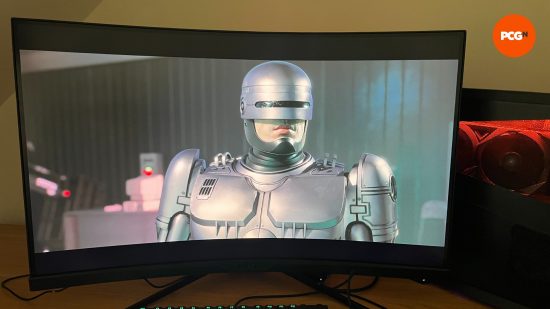
10. MSI MAG 325CQRF QD
The best 1440p curved monitor is the MSI MAG 325CQRF QD.
MSI MAG 325CQRF QD specs:
| Screen Size | 31.5 inches |
| Native resolution | 2560×1440 |
| Max refresh rate | 170Hz |
| Panel type | Rapid VA |
Pros
- Value is incredible
- Color range out guns many IPS panels
- Super responsive
Cons
- Poor I/O design
- Heavy
Bagging a curved 1440p, 170Hz display for under $500 is a bargain any day, but for an MSI MAG gaming monitor, it’s unreal value, considering the pedigree that comes with it. A 1000R curve offers the perfect viewing angle that can be easily adjusted thanks to both swivel and pivot capabilities.
When we reviewed it, we found that it stood toe-to-toe against an IPS display and in some cases provided a better image quality thanks to its 3500:1 contrast ratio and 96.8% DCI-P3 color range. It makes your games pop and adds a vibrancy that’s missing from some much more expensive monitors we’ve seen.
For those who like to tinker with their settings, this MSI MAG gives you all the freedom to make these changes on the fly thanks to an intuitive GUI. Granted, something not so intuitive is its I/O, which resides on a south-facing ridge, meaning it’s impossible to blindly arrange cables, and you almost have to pick the entire monitor up to make any adjustments.
Read our MSI MAG 325CQRF QD review for more.
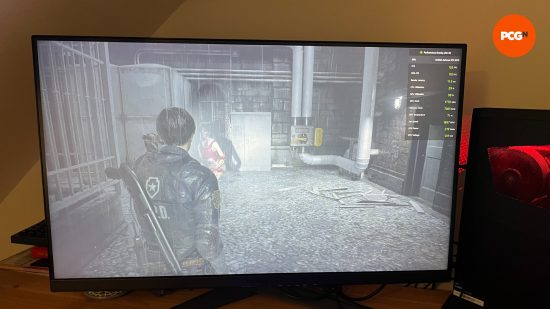
11. LG UltraGear 32GR93U-B
The best mid-tier 4K gaming monitor is the LG UltraGear 32GR93U-B.
LG UltraGear 32GR93U-B specs:
| Screen size | 32 inches |
| Native resolution | 3840×2160 |
| Max refresh rate | 144Hz |
| Panel type | IPS |
Getting started with 4K gaming can be hard, not only because of the hardware you need to run games efficiently but because finding a good monitor that won’t cost over the odds can seem impossible. The LG UltraGear 32GR93U-B is the solution to these problems, while it certainly isn’t cheap – it’s 4K after all – you are paying a lot less than some similar options.
While the LG UltraGear 32GR93U-B doesn’t do anything spectacular to stand out from the crowd, it is, at its core, an LG UltraGear, meaning performance is well optimized and the build quality is strong.
Whether you’re ready to jump into 4K gaming straight away, are preparing for the future, or perhaps just want an option that can serve both your PC and your console, the LG UltraGear 32GR93U-B can give you everything you need.
Read our LG UltraGear 32GR93U-B review for more.
How we choose the best gaming monitors
When compiling this list we considered many key aspects of each monitor, including:
- Price: The gaming monitors with the best specs are always the most expensive, but for most gamers, this can be overkill. We’ll always look for monitors at a range of prices, and let you know whether they warrant their high price tag, or whether the cheaper products have any major drawbacks.
- Screen size: While a bigger gaming monitor is often better, not everyone has a huge gaming setup or budget. We’ve covered options starting at 24 inches all the way up to 34 inches.
- Resolution: The resolution of a gaming monitor is an important consideration, and refers to the density of pixels on the screen. Put simply, the more pixels there are, the crisper the picture. So is there a perfect resolution for gaming monitors? Not quite. Gaming monitors start at 1080p and go all the way up to 8K. We’d recommend 1080p as a minimum, but if your budget can stretch to the 4K gaming monitor you’ll be future-proofing your setup for some time to come.
- Design: If you’re investing in a new monitor, you want it to be solidly built and long-lasting. We analyze the build quality of monitors, as well as how good they’ll look on your gaming desk – which is more subjective.
- Picture quality: Specs are one thing, but real-life experience is another. Ultimately, the biggest consideration is how games look while you play – is the monitor’s screen too bright or too dim and can brightness be adjusted? Does it consistently avoid blurriness and ghosting? While there are many aspects to consider, it’s how it all comes together that counts
Read our how we test page to learn more about our process.
Is 60Hz good for gaming?
While 160Hz monitors like the LG 34GP83A-B are top-tier when it comes to helping aid quick reaction times in competitive multiplayer games, a 60Hz panel is still brilliant for gaming, especially if you’re not playing at a professional level. Also, if your GPU is on the older side and struggling to hit higher refresh rates, a 60Hz monitor is a better choice.
Should I use two gaming monitors?
Multi-monitor setups admittedly look a bit like a hacker setup from a cheesy Hollywood action flick, but using more than one display is beneficial. The extra screen will give you somewhere to pop your Discord window while running games, and it’ll come in handy if you work from home.
Of course, using additional monitors fully depends on your graphics card of choice, as you’ll need appropriate display outputs. The extra screens could also make lower-spec GPUs sweat, which in turn can have an effect on in-game performance.
Should I use Nvidia G-Sync?
It’s possible to use G-Sync on many FreeSync monitors, as the underlying technology is fundamentally the same. Here’s our handy video on how to enable Adaptive Sync with an Nvidia GeForce GPU. PCGamesN also has a full guide on how to run AMD’s screen tech with a GeForce GPU.
